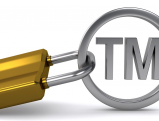
Consider a DMCA takedown request if someone has copied your website. This involves identifying the ISP, evaluating fair use defenses & drafting a takedown notice.
by Paige Pembrook
November 17, 2015
The Digital Millennium Copyright Act (DMCA) states that — while an Internet Service Provider (ISP) is not liable for hosting infringing content on user’s websites— after an ISP receives proper notice of such content, it must remove the materials.
A copyright owner who finds infringing material on a website can and should report infringing material and request that it be removed through a “DMCA takedown notice.” However, drafting the notice is just one step in an effective takedown.
1. Before Drafting the Notice, Identify the Internet Service Provider (ISP)
A copyright owner who finds an infringing website must address their DMCA takedown notice to the ISP that is hosting the culpable website. Thus, the first step in drafting a successful notice is identifying the host ISP. This may be accomplished by using a domain name service (such as www.domaintools.com/research/dns), or a “who is” search on the website name (such as the one available at www.whois.net).
Upon identifying the ISP, the next step is identifying the ISP’s contact information for takedown notices. The DMCA requires ISPs to provide the Register of Copyrights with contact information of a designated agent specifically set up to receive takedown notices. The Register of Copyrights has published this directory of agents online.
Some websites provide the contact information for copyright/DMCA complaints directly. For example, YouTube has a link to “Copyright” at the bottom of the home page.
2. Evaluate Potential Fair Use Defenses
Before sending a takedown notice, courts additionally require that copyright owners evaluate whether the use of the apparently infringing image at issue is “fair use” protected by law. When apparently infringing material is deemed to be a fair use, it is not considered infringement. Fair use is a fairly complicated legal inquiry, and courts weigh the following four factors on a case-by-case basis:
a. Purpose/Character: The purpose and character of the use (including whether it is for commercial or nonprofit educational purposes).
b. Nature: The nature of the copyrighted work (if your copyrighted work has been published and/or is factual then the other work is more likely to be considered a fair use).
c. Amount/Substantiality: The amount and substantiality of the portion used (the smaller the portion of the copyrighted work used, the more likely it is to be considered fair use).
d. Effect: The effect on the use upon the market for or value of the copyrighted work (when the unauthorized use directly competed with the copyright owner’s business or potential income, a court will usually find that the unauthorized use is not fair).
When evaluating whether alleged infringement constitutes fair use, ask whether it falls into one of the traditional fair use purposes, such as criticism, comment, news reporting, teaching, scholarship, or research. For a more in-depth analysis of fair use, consult online resources (such as the Digital Medial Law Project’s explanation of the four factors and the U.S. Copyright Office Fair Use Index of legal cases.)
3. Draft a Takedown Notice that Complies with Statutory Requirements
After identifying the ISP recipient, the next step is drafting the actual takedown notice. In order to be valid under the DMCA, the notice must:
a. Writing: Be in writing;
b. Signed: Be signed by the copyright owner (who may sign electronically or through an agent).
c. Infringed Work Identified: Identify the copyrighted work infringed upon (or a list of infringements from the site).
d. Infringing Material Identified: Identify the material that is infringing your work.
e. Contact Information: Include your contact information.
f. Good Faith: State that you are complaining in “good faith.”
g. Accurate: State that, “under penalty of perjury, that the information contained in the notification is accurate.”
h. Right to Proceed: State that you have the right to proceed (because you are the copyright owner or the owner’s agent).
4. Wait for Compliance or Counter-notification
After the ISP receives your takedown notice, two things happen. First, the ISP should remove the infringing materials within a reasonable time. Second, the ISP will report the alleged infringer of the takedown notice. What happens next depends on whether the alleged infringer responds with his or her own counter-notice.
Under the same provision of the DMCA that allows for the takedown notice, the infringer can file a counter notice with the ISP declaring that the infringer “has good faith belief that the material was removed or disabled as a result of mistake or misidentification of the material to be removed or disabled.” After receiving this counter-notification, the DMCA requires that the ISP repost the infringing material to its original location. Then, having exhausted the informal DMCA process, the only way to stop the infringement is to file a lawsuit and ask the court for an injunction enjoining the infringement.
Topics: Copyright










